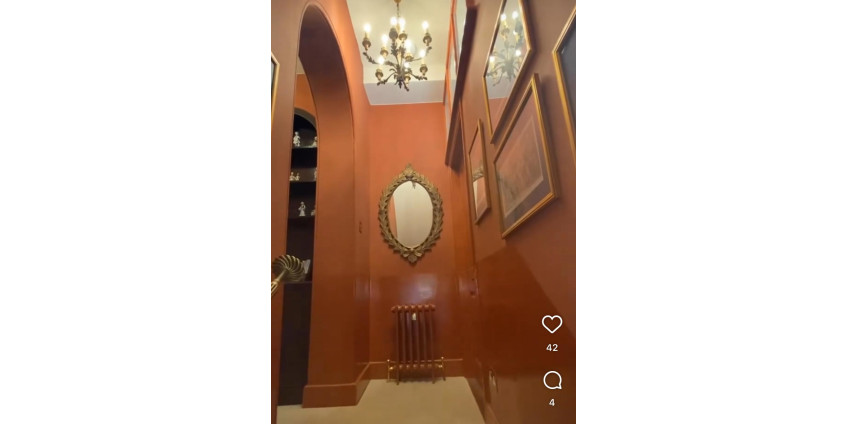
A Guide To Renovating Victorian Properties
History and Style of Victorian Houses:
Victorian houses were built during the reign of Queen
Victoria (1837– 1901) and encompass a wide variety of architectural styles,
including Gothic Revival, Italianate, Folk Victorian, Jacobean and Queen Anne.
These homes are known for their ornate detailing, rich materials, and intricate
craftsmanship, reflecting the prosperity and ambition of the era. Victorian
homes had more elaborate detailing than Georgian homes, characterised by gothic
features, and the use of new materials coloured glass and metal, made possible
by the industrial revolution.

Victorian houses are characterised by:
• Elaborate facades featuring decorative brickwork, bay
windows, and stone embellishments.
• High ceilings and grand proportions.
• Ornate plasterwork, including ceiling roses and cornices.
• Stained glass windows with intricate designs.
• Patterned, Victorian floor tiles, particularly in hallways
and entrances.
• Heavy wooden doors with decorative ironmongery.
• Fireplaces in almost every room, often featuring carved
wood, marble, or cast iron.
• Dado and Picture Rails, adding decorative and practical
elements to walls.
• Wallpaper Characterised by elaborate patterns, rich colours,
and intricate designs, Victorian wallpaper reflected the era's fascination with
ornamentation and the revival.
Renovation Tips Many original features would have been
removed during the 1960’s and 70’s where the Victorian aesthetic was
unfashionable. When renovating a Victorian home, it is essential to balance
historical features with modern functionality.
Here are key considerations: Restoring Period Features
• Windows & Doors: Preserve original sash windows and
solid wooden doors where possible or use high-quality replicas. If the windows
have shutters replace of repair them. Add secondary glazing if you have the
original windows.
• Fireplaces: Open-up even if only using them as a
decorative feature. Restore or replace with Victorian-style cast-iron or tiled fireplaces.
• Flooring: Keep or reinstate original wooden floors,
encaustic tiles, or parquet.
• Plasterwork & Cornices: Strip paint and remove any
mould. Repair or replicate decorative mouldings to maintain period
authenticity. Replace or repair ceiling roses.
• Dado Rails & Picture Rails: Preserve or reinstate
these features to enhance period charm and break up wall space aesthetically.
Enhancing Natural Light Victorian homes can be dark due to their narrow windows
and deep layouts. Consider:
• Adding larger windows or French doors to increase natural
light.
• Installing skylights in extensions or loft conversions.
• Using light-reflective colour palettes and mirrors to
brighten spaces. Modern Comforts with Period Features.
• Kitchen Extensions: A sensitive rear extension can provide
modern open plan living while retaining period features.
• Bathroom Upgrades: Introduce traditional fittings such as
clawfoot baths and high-level cistern toilets.
• Energy Efficiency: Improve insulation and introduce
secondary glazing to retain heat while preserving original windows.
Room-by-Room Renovation Guide Hallways & Entrances Victorian hallways make
a bold first impression with tiled floors and decorative archways.
• Flooring: Restore original encaustic or geometric tiles or
install Victorian-style replicas.
• Colour Palette: Deep greens, heritage blues, or rich
burgundies for an opulent feel. • Lighting: Ornate pendant lights or period
wall sconces.
• Doors & Windows: Retain or restore stained glass and decorative
fanlights. Living Rooms Typically formal spaces with grand fireplaces and bay
windows.
• Colour Palette: Rich jewel tones like emerald-green, deep
navy, or dark red. Wallpaper is also very appropriate for Victorian rooms.
• Fireplace: Retain or restore a Victorian cast-iron
fireplace with decorative tiling.
• Ceilings: Preserve intricate ceiling roses and cornicing.
• Dado & Picture Rails: Use dado rails to separate
two-tone wall colours and picture rails to elegantly frame artwork.
• Furniture: Mix period antiques with modern comforts for a
balanced look. Dining Rooms Often separate rooms designed for entertaining,
also the option of opening-up the room making an open plan space.
• Colour Palette: Warm golds, deep purples, or dark teals or
wallpaper for a luxurious ambiance.
• Flooring: Maintain original wooden floors and add a
period-style rug.
• Lighting: Chandeliers or wall-mounted gaslight-style
fixtures.
• Storage: Retain or add built-in cabinetry and sideboards.
• Dado & Picture Rails: Use dado rails to define lower
wall panelling and picture rails to add classic Victorian detailing. Kitchens
Victorian kitchens were utilitarian but can be reimagined with period features
and modern efficiency.
• Colour Palette: Soft greys, dark blue or terracotta
heritage whites, or muted greens.
• Cabinetry: Shaker-style cupboards with brass or ceramic
handles. Add a butlers sink, for authenticity.
• Worktops: Butcher block, marble, or stone for a classic
aesthetic.
• Lighting: Industrial-style pendant lights or
period-appropriate sconces. Bedrooms Elegant spaces that can be both cosy and
grand.
• Colour Palette: Soft pastels, muted pinks, or warm
neutrals.
• Flooring: Wooden floors with Victorian-style rugs for
warmth.
• Windows: Retain sash windows with heavy drapes or
plantation shutters.
• Wardrobes: Built-in storage with panelled doors in keeping
with Victorian aesthetics.
• Picture Rails: Use to elegantly display artwork or decorative elements.
• Bathrooms: A Victorian style bathroom will be a classic,
historical and luxurious addition.
• Colour Palette: Classic white with black accents, or soft
blues and greys.
• Fixtures: Clawfoot baths, pedestal sinks, and high-level
cistern toilets.
• Flooring & Tiles: Black and white checkered tiles or
ornate ceramic patterns.
• Accessories: Traditional brass or chrome fixtures, vintage
mirrors, and towel rails.
Conclusion
Renovating a Victorian home requires a thoughtful approach
balancing restoration and updating the house to modern standards. Restoring
period features and choosing sympathetic updates, you can enhance the timeless
elegance of a Victorian property while ensuring it remains practical for
contemporary living. Dado and picture rails are essential elements that
contribute to the Victorian aesthetic, offering both functional and decorative
appeal in almost every room
Harriet Cotterill
